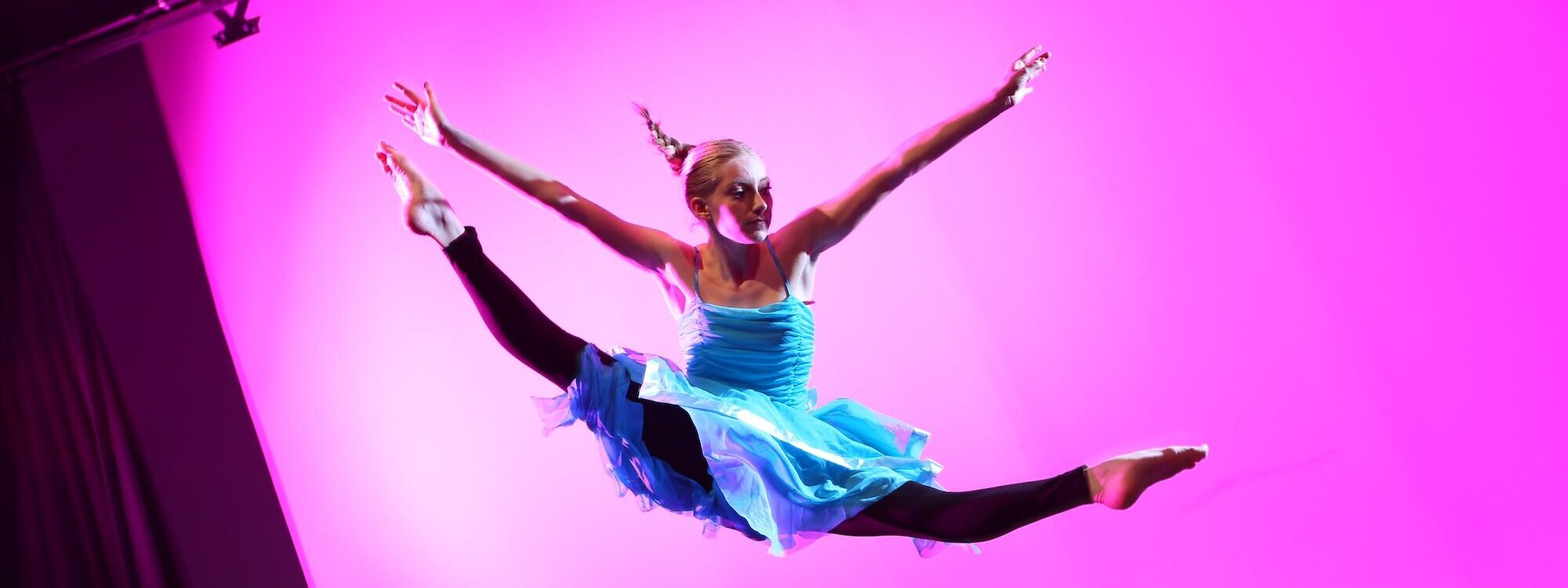- Home
- Our Courses
- All Courses
- Dance
Dance
What is Dance A-Level?
This dynamic course blends choreography, performance, and critical analysis, giving you the chance to explore dance as both an art form and a powerful way of communicating. You'll develop your technical dance skills, learn to express your ideas through movement, and study the social and historical context of dance. Whether you’ve danced for years or are keen to take your passion to the next level, this course is for you!
What will you study on A-Level Dance?
The course is split into two key components:
• Component 1: Performance and Choreography
You will perform as a soloist and in a quartet, as well as create your own group choreography based on a chosen stimulus. This is your chance to shine as both a dancer and a creative artist.
• Component 2: Critical Engagement
You will study two areas: Rambert Dance Company (1966–2002) and Independent Contemporary Dance in Britain (2000- current) – you will explore a range of contemporary and modern dance styles and works. This written component helps you understand how dance fits into culture, history, and society.
What you'll need:
Comfortable dancewear, a willingness to collaborate, and a passion for movement. You will also need a dance file, paper and pens to reflect on your progress, record your creative ideas and store your theory work.
What Next after studying Dance A-Level?
Our A-Level Dance students have gone on to study at top conservatoires and universities including Trinity Laban, Northern School of Contemporary Dance, Urdang, Bird and Performers College. Others pursue careers in areas such as:
- Teaching and Education
- Dance/Sport Therapy or Physiotherapy
- Performing Arts
- Business Management
- Event production in the creative media industry
Dance develops creativity, discipline, teamwork, and confidence – skills that are valued in any career!
Exam Board for A-Level Dance
The AQA (Assessment and Qualifications Alliance) is the examining board for the Dance A-Level course. They set out and assess the exam to make sure students meet the required standards for this qualification.
How it's assessed:
Written exam: 2 hours 30 minutes 100 marks 50% of the A-Level
Two sections:
Section A: short answer questions (25 marks) and one essay question (25 marks) on the compulsory set work/area of study.
Section B: two essay questions on the second set work/area of study (25 marks for each essay)
Entry Requirements for A-Level Dance
To qualify for the Dance A-Level at Cardinal Newman, students must achieve a minimum of five GCSEs at grade 5 or higher, including at least a grade 5 in GCSE English Language or Literature AND practical dance experience (e.g. GCSE Dance, external dance classes, exams/grades, shows, clubs etc). If you love to move and are ready to commit to the creative process, this course is for you. We will invite you into College before you enrol to experience a day of dance.
At Cardinal Newman, we offer the flexibility of a Mixed Programme too. This allows students to combine A-Level courses with BTEC qualifications.
What Enrichment is on offer in this subject?
You'll have the chance to:
• Take part in workshops with professional dance companies
• Perform in showcases and College productions
• Go on theatre trips to see live dance performances
• Join our Dance Academy
• Be part of community dance projects and competitions
What other subjects go well with this subject?
A Level Dance can be studied alongside any other subject. Some examples of combinations that work well with Dance are:
• Drama & Theatre – for performers who love to tell stories
• Music – for rhythm and musicality
• Psychology – to explore movement, behaviour, and emotion
• English Literature or Language – to deepen your understanding of narrative and theme
• PE or Biology – for those interested in anatomy, physiology, and movement science
• History – to deepen understanding of context, culture and society
@newman_college
Follow Us On Instagram











